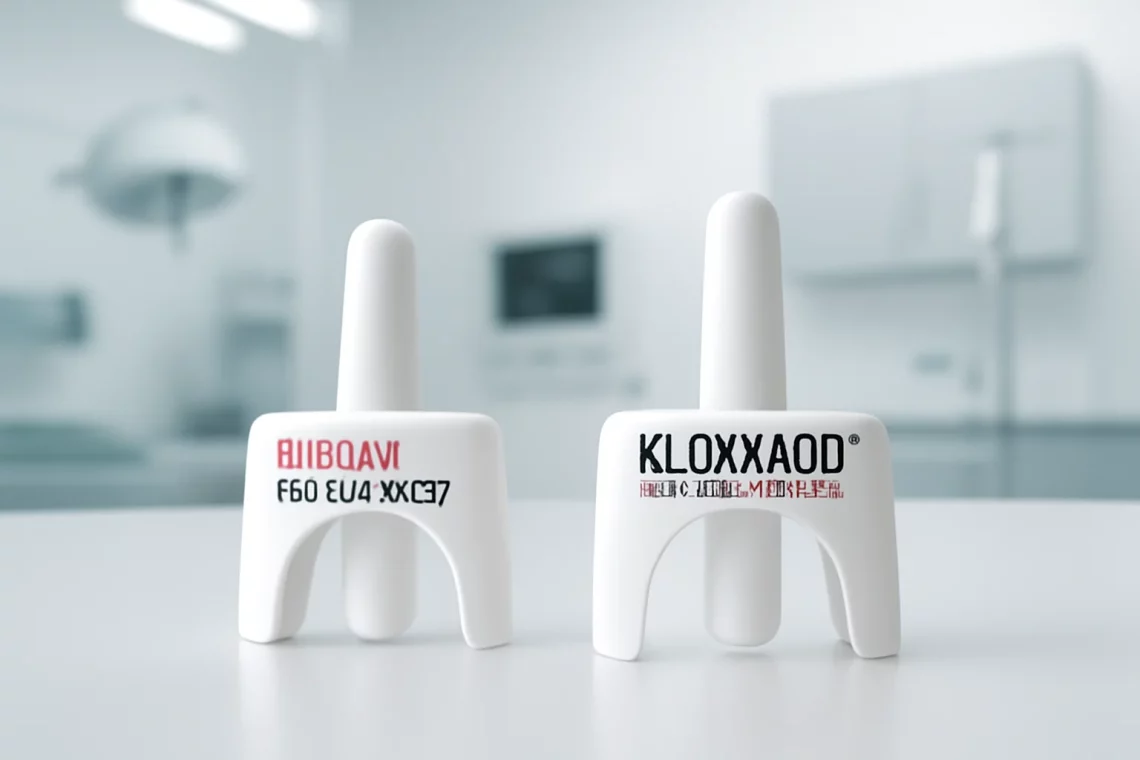
Narcan vs Kloxxado: Which Naloxone Option is Right for You?
Narcan and Kloxxado are two life-saving medications used in the emergency treatment of opioid overdoses. In recent years, the opioid crisis has escalated, drawing attention to the urgent need for effective treatments that can reverse the effects of opioid overdose. These medications work by rapidly binding to opioid receptors in the brain, thereby displacing the opioids and reversing the life-threatening symptoms of overdose. Understanding the differences between Narcan and Kloxxado is crucial for medical professionals, first responders, and even the general public, as these medications can mean the difference between life and death in critical situations. As awareness of the opioid crisis grows, so does the conversation around harm reduction strategies, including wider access to opioid antagonists like Narcan and Kloxxado.
Both medications have proven efficacy, but they differ in formulation, administration routes, and some aspects of their use. This article delves into the specifics of Narcan and Kloxxado, exploring their mechanisms, effectiveness, and practical applications in emergency situations. By understanding these differences, individuals and communities can be better equipped to respond effectively to opioid overdoses.
Understanding Narcan: Mechanism and Usage
Narcan, also known by its generic name naloxone, is an opioid antagonist specifically designed to counteract the effects of opioids. It works by binding to the same receptors in the brain that opioids target, effectively reversing the respiratory depression and sedation caused by an overdose. Narcan is available in several forms, including intranasal sprays and injectable solutions, making it accessible for use in various emergency situations.
One of the key advantages of Narcan is its rapid onset of action. When administered, Narcan can begin to reverse the effects of an opioid overdose within minutes. This quick response is critical, as opioid overdoses can lead to death if not treated promptly. The intranasal spray form is particularly user-friendly, allowing bystanders without medical training to administer the medication effectively.
The dosage of Narcan can vary depending on the severity of the overdose. Generally, healthcare providers recommend starting with a low dose and repeating it every two to three minutes until the individual responds or emergency medical services arrive. This flexibility is important, as different opioids have varying potencies. For example, synthetic opioids like fentanyl require higher doses of naloxone for effective reversal compared to natural opioids like morphine.
Narcan’s accessibility has increased in many regions, with many pharmacies offering it without a prescription. This move has been crucial in combating the opioid epidemic, empowering individuals to take action in emergency situations. However, despite its effectiveness, it is vital to remember that Narcan is not a substitute for professional medical care. Even after successful administration, individuals should still seek medical attention, as the effects of Narcan can wear off before the opioids have fully cleared from the system.
Kloxxado: A New Contender in Opioid Overdose Reversal
Kloxxado is another formulation of naloxone that was developed to address some of the limitations associated with traditional Narcan. Like Narcan, Kloxxado acts as an opioid antagonist, but it features a higher concentration of naloxone, which can be particularly beneficial in cases of severe opioid overdose, especially those involving potent synthetic opioids.
The primary difference between Kloxxado and Narcan lies in their formulations and delivery methods. Kloxxado is available as an intranasal spray, similar to Narcan, but it contains a higher concentration of naloxone, allowing for potentially more effective treatment in severe cases. This higher concentration means that fewer doses may be required to reverse an overdose, making Kloxxado a valuable option for first responders and healthcare providers.
Another significant aspect of Kloxxado is its ability to provide a longer duration of action compared to Narcan. This is particularly important in emergency situations where prolonged exposure to potent opioids may lead to recurrent respiratory depression even after initial treatment. The extended duration of Kloxxado can provide a critical buffer while waiting for emergency medical services to arrive.
Despite its advantages, Kloxxado is not without its challenges. The higher concentration may pose a risk of overdose in individuals who are not trained to recognize the signs of opioid overdose or administer the medication properly. Therefore, education and training around Kloxxado usage are essential to ensure that it is used safely and effectively.
Both Narcan and Kloxxado serve as essential tools in the fight against opioid overdoses, but understanding their differences can help individuals and medical professionals make informed decisions about which medication to use in various scenarios.
Comparative Effectiveness: Narcan vs. Kloxxado
When comparing the effectiveness of Narcan and Kloxxado, it is important to consider several factors, including the severity of the overdose, the specific opioids involved, and the administration method. Both medications have been proven to be effective in reversing opioid overdoses, but variations in their formulations can influence outcomes.
Narcan has a long history of successful use in emergency situations. Its intranasal spray form is well-established, and many first responders are trained to use it. However, in cases involving highly potent synthetic opioids, Narcan may require multiple doses to achieve the desired effect. This can be a critical factor in emergencies where time is of the essence, and the individual may not have the luxury of waiting for multiple doses to take effect.
Kloxxado, on the other hand, offers a potentially more effective solution in these high-stakes scenarios. With its higher concentration of naloxone, Kloxxado may achieve faster and more sustained reversal of opioid effects, particularly in cases involving substances like fentanyl. However, due to its potency, there is an increased need for proper training and awareness regarding its use to prevent accidental overdose.
Another consideration is the duration of action. Kloxxado’s longer-lasting effects can provide an advantage in managing prolonged overdoses, ensuring that individuals are monitored and stabilized until professional medical assistance arrives. This can be particularly crucial in settings where rapid medical intervention may not be immediately available.
Ultimately, the choice between Narcan and Kloxxado may depend on the specific circumstances of an opioid overdose, including the type of opioid involved, the individual’s medical history, and the availability of each medication. Both options have their unique benefits and limitations, making it essential for communities and healthcare providers to have access to both medications to effectively combat the opioid crisis.
Access and Training: Importance in Community Health
Access to naloxone, whether in the form of Narcan or Kloxxado, is crucial in addressing the opioid crisis and saving lives. Many states have enacted legislation to improve access to these life-saving medications, allowing individuals to obtain naloxone without a prescription. This increased availability empowers communities to take action in the face of an epidemic that has claimed countless lives.
However, access alone is not enough. Training and education on how to recognize the signs of an overdose and appropriately administer naloxone are vital components of community health initiatives. Many organizations offer training programs to educate individuals, families, and first responders on how to use Narcan and Kloxxado effectively. These programs often cover important topics such as proper administration techniques, understanding dosage, and what to do after naloxone has been administered.
Additionally, community awareness campaigns can help destigmatize opioid use and emphasize the importance of harm reduction strategies. By fostering an environment where individuals feel comfortable seeking help and using naloxone, communities can work together to combat the opioid crisis more effectively.
In summary, while access to Narcan and Kloxxado is critical, ensuring that individuals are trained in their use is equally important. Community health initiatives that prioritize education and awareness can have a significant impact on reducing opioid-related fatalities and promoting a culture of support and recovery.
**Disclaimer**: This article is for informational purposes only and does not constitute medical advice. Individuals experiencing health issues or emergencies should consult a qualified healthcare provider for advice and treatment.




